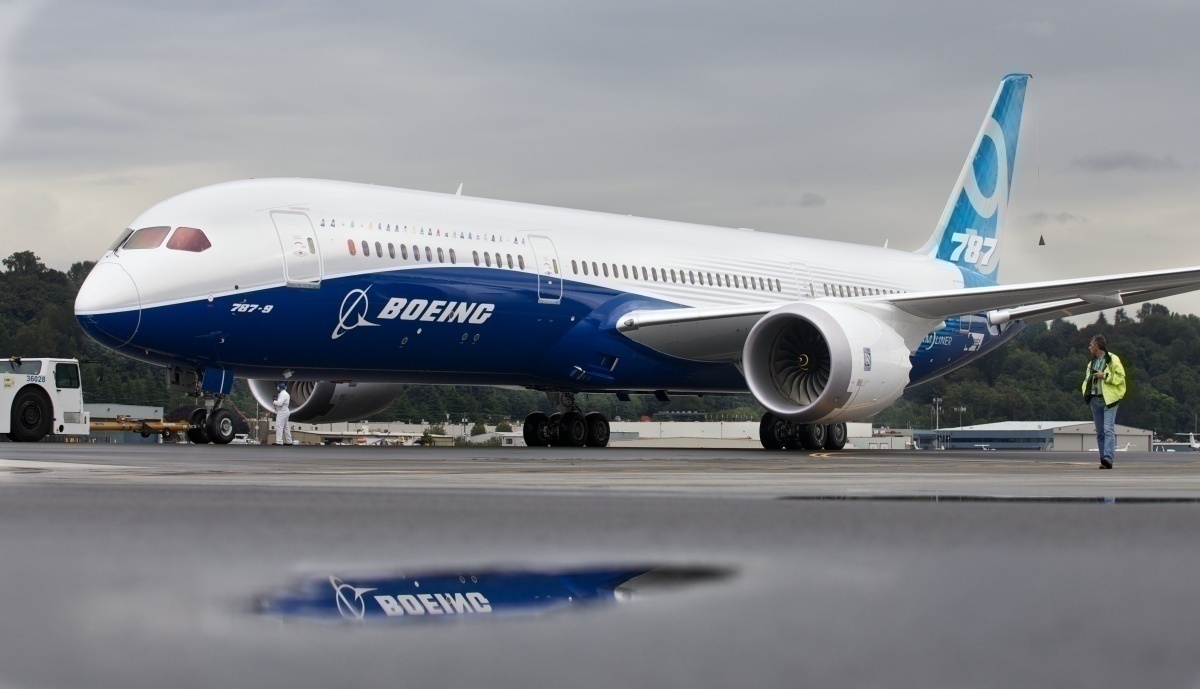It might surprise you to know that the lastest 737 MAX grounding is not Boeing’s first. In fact, back in 2013, the airframe suffered another blow on the back of battery problems with its 787 model. What happened, and how did Boeing overcome this hurdle?

2013 was an unfortunate year for Boeing in terms of its 787 Dreamliner range. Having first brought out the aircraft in 2007, the airframer ran into issues with the aircraft some years later. After a string of similar smoke and fire-related events, the Federal Aviation Administration (FAA) issued an investigation into the 787.
The issue stemmed from the aircraft’s lithium-ion battery, and redevelopment was needed. Here’s a look back at what happened.
Problems began in January 2013
The first anyone knew about problems with the Boeing 787 battery was on January 7th 2013. A Japan Airlines 787 had arrived at Boston Logan International Airport at 10:00 local time (14:00 UTC). With 183 passengers and crew onboard, the aircraft was being prepared for its next departure when a worker noticed smoke.




Immediately, the plane was evacuated and emergency services called. What they found was a fire in the belly of the aircraft accompanied by lots of smoke in the cabin. According to the Chief of the Massport Fire-Rescue Department, who spoke to CNN at the time, fire crews “advanced an aggressive, offensive fire attack.”
The Fire Chief went on to say,
“We did have a flare-up. There was a small explosion — one of the batteries, and we again went in with a secondary attack and were again able to knock it down.”
However, that was not the only issue. Two days later, a United Airlines 787 reported a wiring fault in the same area as the Japan Airlines fire. The FAA and Japanese Transport Ministry both launched separate reviews into the issue.




ANA 787 makes an emergency landing
At the time of the Japan Airlines and United Airlines incidents, 787s were still flying. It was not thought that the threat was severe enough for a grounding. These two incidents were, so far as the FAA thought, isolated instances.
That said, there would still be another incident to come. Perhaps the most severe battery fault with the 787 was when All Nippon Airways (ANA) made an emergency landing in Takamatsu Airport. The aircraft registered JA804A was carrying 137 passengers and crew and was performing a domestic route between Ube and Tokyo.
A burning smell wafted through the cabin at the same time that crews became aware of battery problems. Pilots secured the all-clear for an emergency landing at Takamatsu Airport, where the plane was evacuated. Only three sustained injuries as a result of the evacuation.




What was the issue?
Following this incident, the FAA ordered all 787 to be grounded on January 17th 2013, while it investigated the issue. Its Airworthiness Directive and review focused on the critical systems of the aircraft, including special attention in the lithium-ion battery.
Initial findings determined that the fires on the aircraft had not been a result of excess voltage. Neither was the charging point to blame. Instead, it was believed that one cell within the battery had short-circuited. That had, in turn, caused thermal runaway into other cells resulting in overheating and fire.
As part of the investigation, at the end of 2014, the National Transportation Safety Board (NTSB) found fault with three entities. Firstly, GS Yuasa was indicted for the inadequate manufacture of the battery in Japan. Secondly, a lack of responsibility was placed on Boeing engineers who didn’t carry out sufficient scenario testing.




Thirdly, the NTSB called the FAA into question for not highlighting the issue sooner.
Boeing gets to work with a solution
After initial investigations, Boeing was quick to come up with a solution to its battery issues. In February 2013, it submitted a proposal for the update of the 787 battery and later made changes. In a press release from March 2013, the airframer said,
“Design feature improvements for the battery include the addition of new thermal and electrical insulation materials and other changes. The enhanced production and testing processes include more stringent screening of battery cells prior to battery assembly. Operational improvements focus on tightening of the system’s voltage range. A key feature of the new enclosure is that it ensures that no fire can develop in the enclosure or in the battery.”




On April 19th 2013, Boeing announced that the FAA had approved its battery improvements. It could now begin the process of returning the aircraft to service. While four months on the ground did incur a high cost for some airlines, Boeing’s timely fix ensured that it wasn’t any worse.
How bad are battery problems?
Of course, an airplane is at its best when all the components work, and no airframer will put out an aircraft unless that’s the case. Boeing had expected to get around 10 million flight hours out of its battery, but that wasn’t the case by the time issues arose.
At the time of the incidents, a battery fire could have been pretty severe, given that there are no fire suppression tools within that area. However, Boeing’s solution to better contain potential fires makes this element much safer.




In addition, while ANA’s fire could have been worse, the responsiveness of crews was crucial to the safety of all onboard.
Case closed?
Boeing’s 787’s are now even safer to fly thanks to essential updates. Since then, no large scale issues have arisen. That said, a United Airlines 787 did experience an overheating problem on its approach to Paris Charles De Gaulle Airport in 2017. This is thought to be an isolated incident and has not resulted in the further grounding of the fleet.
What’s your reaction to this story? Let us know your thoughts in the comments.



